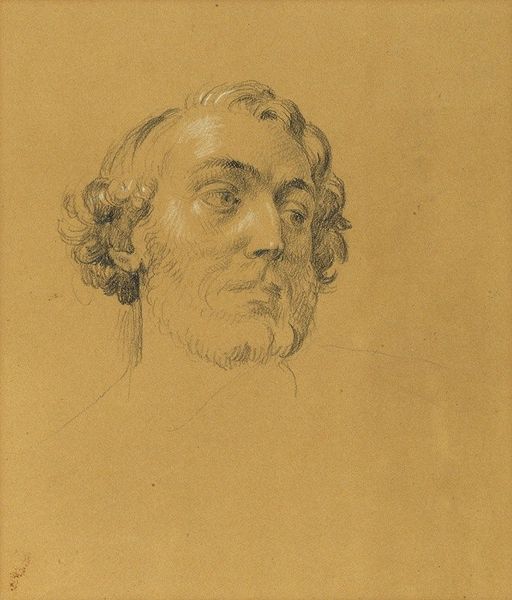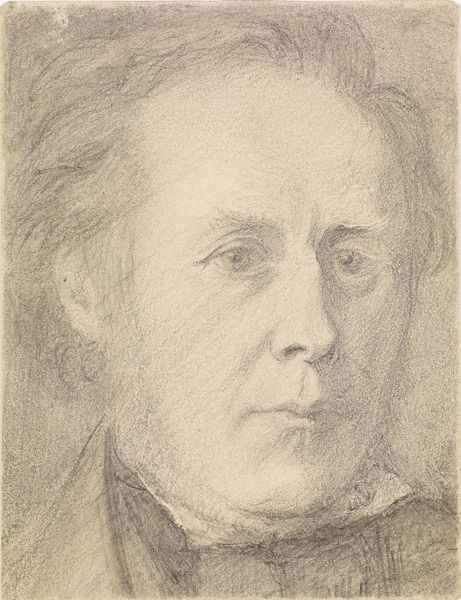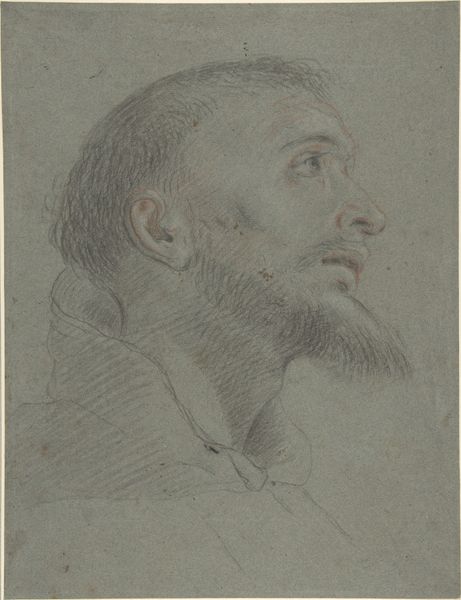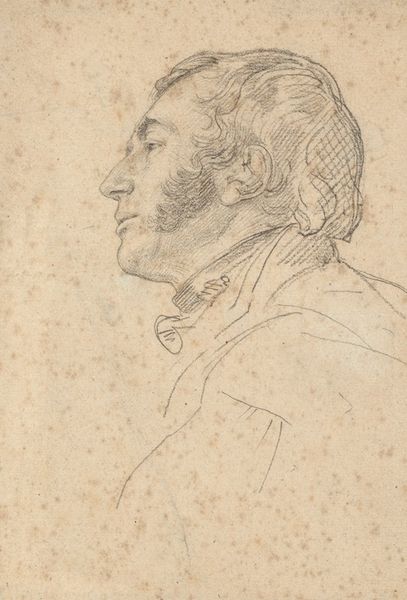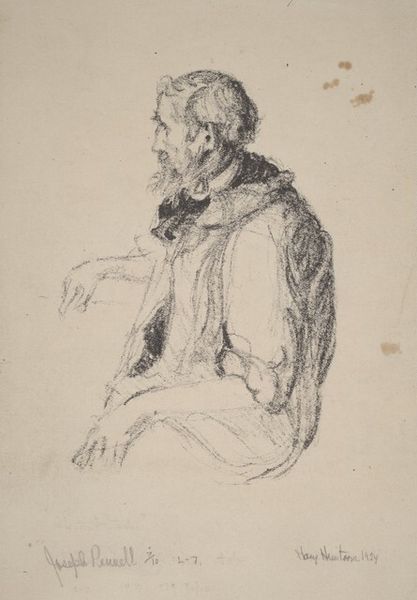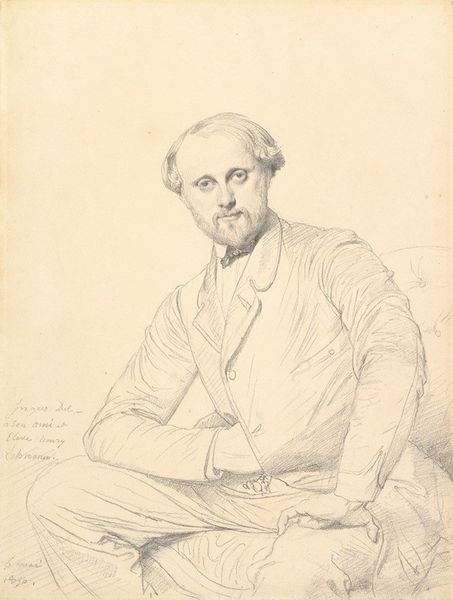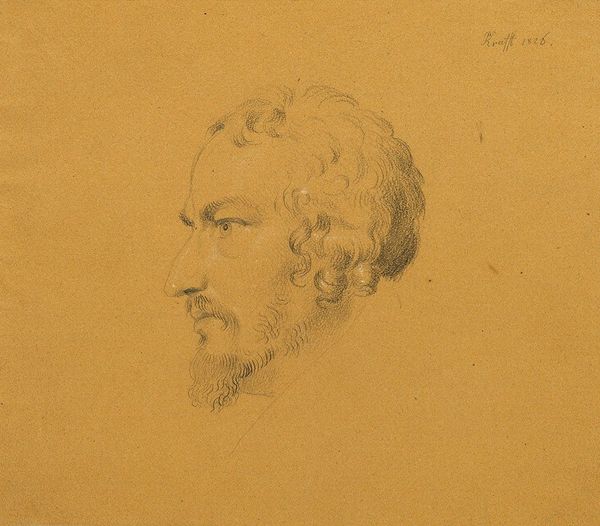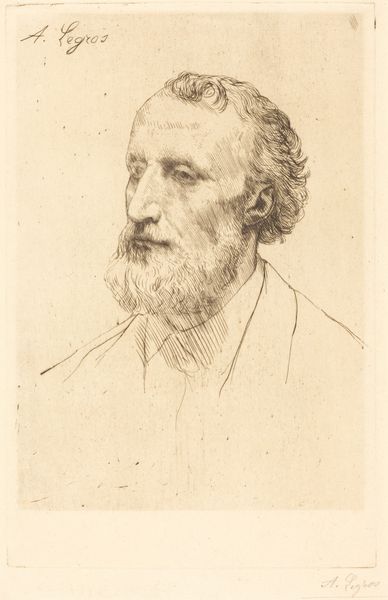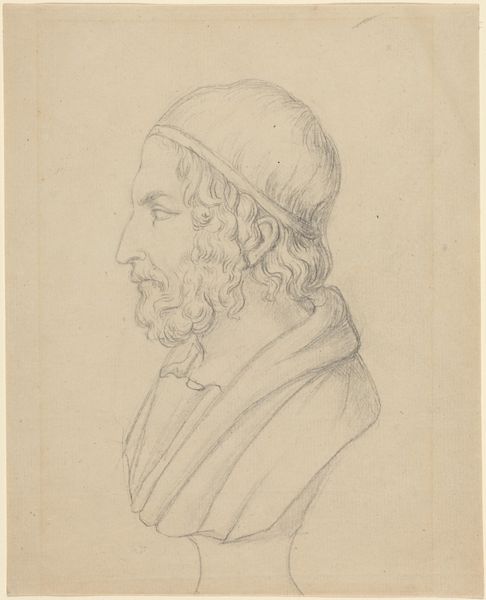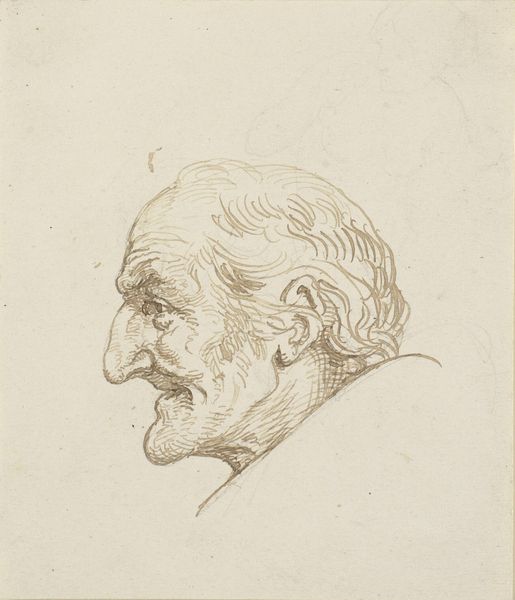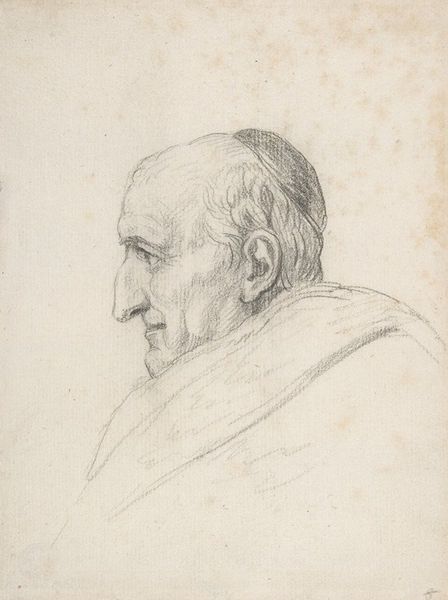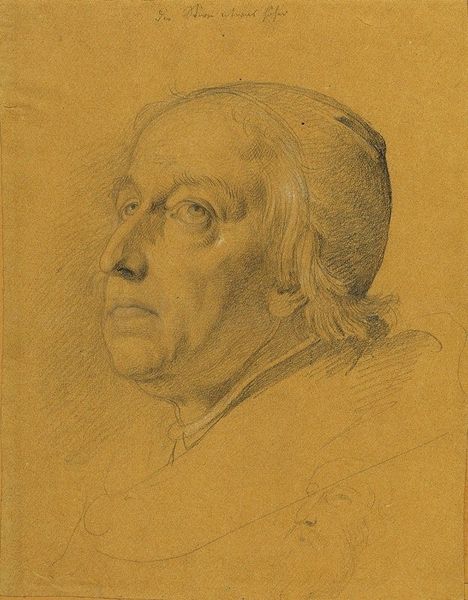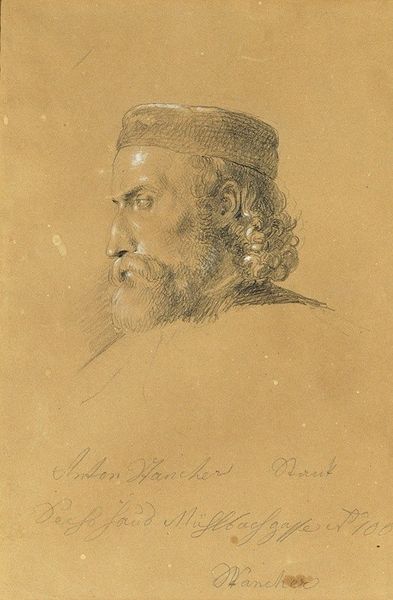
drawing, pencil, graphite
#
portrait
#
drawing
#
self-portrait
#
figuration
#
pencil drawing
#
pencil
#
graphite
#
portrait drawing
#
northern-renaissance
Copyright: Public Domain: Artvee
Editor: Here we have "Head Study of a Bearded Man," a graphite drawing by Johann Peter Krafft. It looks like a study, maybe for a larger work. The lines are so delicate, almost tentative. What catches your eye in this drawing? Curator: The cap. It's a subtle addition, yet it immediately evokes associations with scholars, possibly religious figures, depending on the historical context which requires deeper analysis. It’s not just headwear; it's a visual signifier of intellect and authority. Editor: So the cap acts like a key? Curator: Precisely. Consider the beard as well. Throughout history, beards have carried varied cultural weight, from wisdom and virility to piety. Krafft's deliberate rendering of these features encourages us to decode the sitter's potential status or role, linking it to larger historical narratives of power, knowledge, or perhaps even spiritual understanding. Notice, also, how light plays across his face. Where do you see the artist directing our attention? Editor: It's strongest on his forehead and nose, drawing our gaze to his thoughtful expression. So you're saying these symbols work together to create meaning? Curator: Exactly. The combined imagery invites contemplation on themes like knowledge, age, and identity. Every line and shadow adds to the layered symbolism. Editor: This gives me so much to think about. I hadn’t considered how much visual shorthand artists use. Curator: Indeed. And exploring those symbols unveils not only the artist’s intent but also the broader cultural memory embedded within the image. This process encourages us to look beyond the surface and explore the stories an image can tell.
Comments
No comments
Be the first to comment and join the conversation on the ultimate creative platform.
